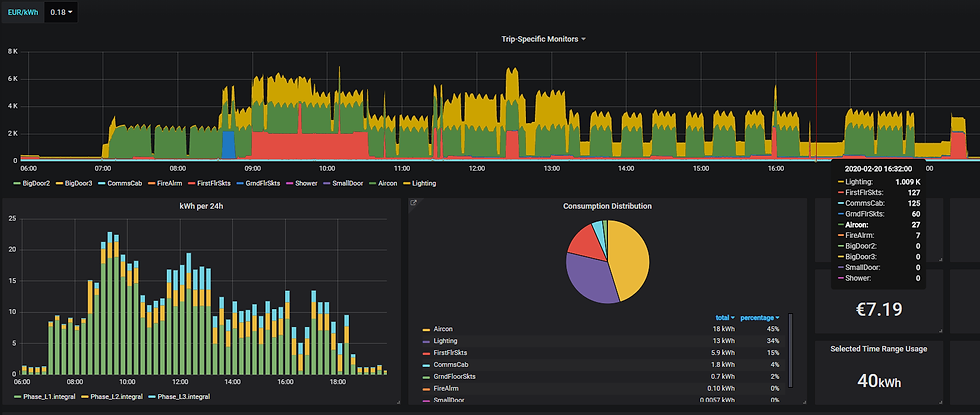Energy Use in the "small office" environment
- Aug 5
- 2 min read
While Ireland and the globe is made up with a substantial amount of workforce spending 8 hours of their day in at a desk, desks are located in a variety of locations from large office complexes, to portakabins and rooms spaces which are built within industrial and commercial complexes. In this entry we explore the energy usage, the comfort and the opportunities to reduce costs within one of thousands of commercial buildings with internal office spaces built within them.
Kevin is one of the directors of TKA fire insulation based out of Cork, Ireland. They operate offices within the upper floor of their commercial unit facilitating 4 full time staff and associated ICT. The office space itself is circa 80 meters squared with a suspended ceiling. Heated by a mixture of both air conditioning and Dyson fan heaters. Lighting is plentiful and delivered by florescent units within the ceiling.
Over a year ago, Kevin asked us to install an monitoring system which would allow him to appreciate 2 things,
1. Energy consumption and breakdowns within the premise
2. Environmental conditions within the office.
Within about an hour of delivery, TKA had a DCSix Wattrix unit monitoring his energy consumption across 10 electrical single and 3 phase circuits. He also had 3 wireless temperature, humidity and light sensors installed beaconing back information to the Wattrix platform every 10 seconds.


What did all of this mean?
In week one it was possible to identify the low hanging fruit and energy wasters on the premises. in this case they were represented in the form of a rogue immersion heater for a sink in a room which was not used and lighting which was not being switched on and off as efficiently as one would like.
It was also surprising to see how quickly the load associated with florescent lighting builds up!
By linking energy consumption in real-time with temperature and humidity it was possible to see that the existing heating methods found it impossible to heat the office temperature above 17 degrees Celsius in march and that if not only for efficiency, some form of measures had to be put in place to allow office temperatures to reach above 19.

TKA invested in a half day of work to distribute 200mm of insulation above the suspended ceiling and removed half of the tubes from lights which were not directly over a workstation to reduce electrical load associated with lighting.
Upon insulating the ceilings, temperatures easily reached the mid 20's and allowed comfort levels to increase dramatically for staff.
While TKA have increased the comfort within the office. DCSix's Wattrix has allowed TKA to appreciate when where and how TKA is using its energy, reducing heating load by 15% and reducing lighting load by 25%



Comments